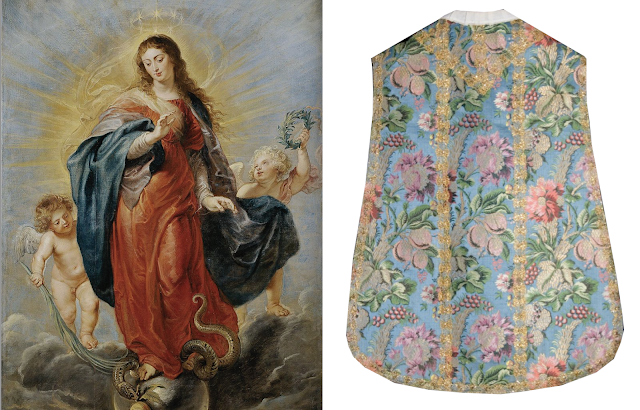Blue vestments are frequently a topic of very great interest -- so much so, one wonders why the Church doesn't simply permit this colour since it pretty clearly seems to be a development that is not only well situated with the precedent of custom but also the manifest desire of the lay faithful; but I digress. If you want a general guideline for 'decoding' blue vestments it is this: not all blue vestments are in fact blue (liturgically speaking); blue was sometimes meant to function liturgically as purple or even occasionally black. (For example, purple sometimes has strong blue undertones and when you look at it, you can see how it could be interpreted as either colour. Likewise, some blues are so dark, navy blue for example, it could easily function as black. To extend this further, some blues have green tones in them and could even be intended to function as liturgical green.) A good general starting point is this: the lighter the colour of blue -- and thus the less arguably able to function as purple or black -- the more likely it was specifically blue, or Marian, in its liturgical intent. The permission that was given for blue does in fact specify the shade of blue known as cerulean. If you want a sense what cerulean looks like, here it is in pigment form (and do also take note of the gradient which shows its range of colour possibilities from lighter to dark cerulean)
Now, does this mean that other shades of blue could not be used for this purpose? I suppose a legalist mentality might suggest no, but historically speaking we see that such precision simply wasn't practical. It is rare that liturgical colours get so precise as to specify one particular shade; in fact, this is the one and only instance where I can think of this happening where liturgical vestments are concerned (prelatial vesture is another matter). I suspect the precise designation of "cerulean" was most likely just a recognition of what was being used at the time the permission was granted and likely intended to distinguish this blue from those more purplish-blues, blackish-blues and greenish-blues that functioned liturgically as other colours.




















